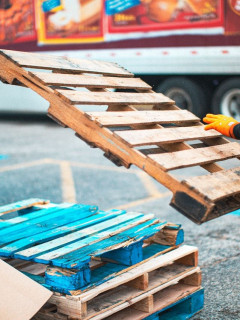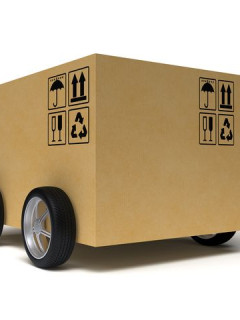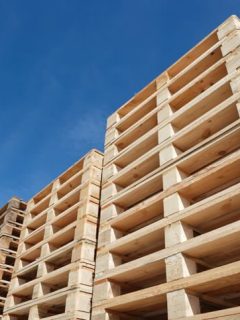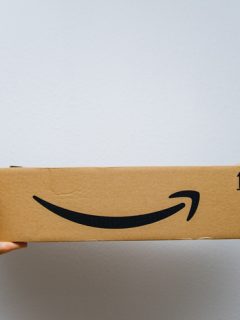Many people use the terms ‘cardboard’ and ‘paperboard’ interchangeably. This is a mistake. Although both materials are paper products, they are not the same thing. There are a number of differences between cardboard and paperboard. What is worth knowing about each of the materials mentioned? What is the difference between cardboard and paperboard? Which is heavier – cardboard or paperboard?
What is cardboard?
Cardboard is a paper-based material that consists of several layers of paper pulp. Not surprisingly, its thickness is greater than that of cardboard. The optimum weight for cardboard is 315 g/m3 (and above). It is mainly used in the food, catering and packaging industries – to make sturdy and robust boxes, sometimes production pallets. Cardboard can be easily chemically treated, which makes it more resistant to mechanical damage and the effects of adverse weather conditions.
What is cardboard?
Cardboardis solid and flexible. It is used for the production of various folders, postcards and lightweight boxes. The optimum grammage is 160-315 g/m3. Cardboard is easy to process. It is suitable for printing and engraving and, not surprisingly, is used for advertising material, book covers and small decorative boxes.
Want to know more? Check out our guide to eco-friendly mailing packaging!
Cardboard and paperboard – how are they made? Which is heavier – cardboard or paperboard?
Both cardboard and paperboard are made from a distinctive paper pulp, produced from cellulose, waste paper and other fillers. Both materials are very environmentally friendly. To make cardboard packaging, at least two layers of the prepared pulp have to be glued together – the result is corrugated cardboard (later trimmed, folded). Cardboard packaging, on the other hand, is made in a similar way, but with a lower grammage.
The shapes of cardboard and paperboard are achieved using a die-cutting machine (which makes precise incisions in the cardboard).
Similarities between cardboard and paperboard
As already mentioned, both cardboard and paperboard are produced from special paper pulp, which is mainly obtained from recycled raw materials. Both materials are therefore very environmentally friendly – another similarity. They can be recycled again after use. Cardboard and paperboard are versatile products, used in many industries for such things as storage, packaging and sorting.
Key differences between cardboard and paperboard. Which is thinner – cardboard or paperboard?
Cardboard isdistinguished by its much lower thickness and stiffness than cardboard. It consists of a single layer of paper. Corrugated cardboard, on the other hand, can have 2 to 5 layers. It can therefore be seen that the main difference between cardboard and paperboard is the structure, the thickness. These issues are also linked to the answer: which is heavier – cardboard or paperboard?
Thickness of cardboard and paperboard
Let’s repeat the question: which is thinner – cardboard or paperboard? Cardboard should be thinner – according to the guidelines. Its grammage is usually between 160-315 g/m2. The grammage of cardboard is higher – above 315 g/m2. Not surprisingly, heavier, more valuable items can be packed in it. These are the basic answers to the question: which is thinner – cardboard or cardboard?
Recycling differences between cardboard and paperboard
Both cardboard and cardboard can be recycled – as paper materials. There are differences in the process. Cardboard boxes are much easier to recycle. Unlike cardboard, they do not contain wax and are compressed into bales. The cardboard boxes go directly to willing manufacturers after the recycling process.
Cardboardpackaging, on the other hand, has a more complicated recycling process – it starts with waxing or removing the foil (cardboard contains additional wax or foil). Only after these procedures are carried out are they strictly recycled.
These are the basic answers to the question: what is the difference between cardboard and paperboard in terms of the recycling process.
Differences in the manufacturing process between cardboard and paperboard
Cardboard and paperboard have a different production process. This is another difference between cardboard and paperboard. The former, a single-ply product, is made from cellulose and wood pulp, possibly waste paper.
Cardboard consists of more than one layer, so its production process is longer, more complicated. In addition to wood pulp, waste paper, rags, some chemicals are also added to the paperboard. If it is going to be for food contact, it will be covered with a special protective film.
Differences in the purpose of cardboard and paperboard. What is the difference between cardboard and paperboard?
Cardboard and paperboard have different uses – this is due to the difference in weights. Harder cardboard is used in the catering, food and transport industries, among others. Various foods (e.g. cakes, pizzas) can be stored and transported easily in cardboard boxes. As far as the transport sector is concerned, cardboard packaging is useful for storing and transporting parcels and packages.
Cardboard is much lighter. It is used for lightweight, delicate boxes – often of a marketing nature. If the cardboard is laminated, its resistance to moisture is significantly increased and it can also be printed or engraved. Cardboard boxes are often used to make postcards, covers and folders.
The most popular types of cardboard
First, find out the 10 characteristics of the best cardboard boxes for packaging and sending parcels!
In terms of types: the most common types of cardboard are beige, white and black. The former, the eco-friendly ones have been produced from a special, top-quality Kraft paper. It is characterised by its stiffness, which will be optimal for the production of boxes with a small height. The brown cardboard is useful for the creation of various lightweight, inconspicuous packaging, e.g. document folders, envelopes and cases.
Another type is white cardboard boxes. These boxes have a smooth, aesthetically pleasing, often slippery surface – much nicer than white cardboard packaging. They can only be used as so-called product boxes. Why? They have a decorative function, provide little protection for the contents and are very flimsy (they can easily break down).
Black cardboard boxes appear very elegant. They are often complemented with prints, engravings and hotstamping.
The best shipping boxes – only at RAJA
Wondering what to choose for parcel packaging? Boxes, envelopes, foil packs – what to choose for packing your parcels? The RAJA company has a solution for you.
Strong corrugated cardboard boxes are most often used for packing parcels (for shipping). These include standard and non-standard sized boxes – the latter are designed for special tasks; they are used for transporting unusually shaped, large-size packages.
However, if you are packing smaller and lighter items, it is better to opt for the cheaper and more economical bubble envelope.
Foil envelopes( foil envelopes for packing parcels) are also a good choice – especially for sending textiles, clothes, material accessories.
You can find all the shipping packaging mentioned at RAJA. It is a unique company among other packaging companies. It owes a lot to the fact that the products on offer are made of environmentally friendly, biodegradable materials.














